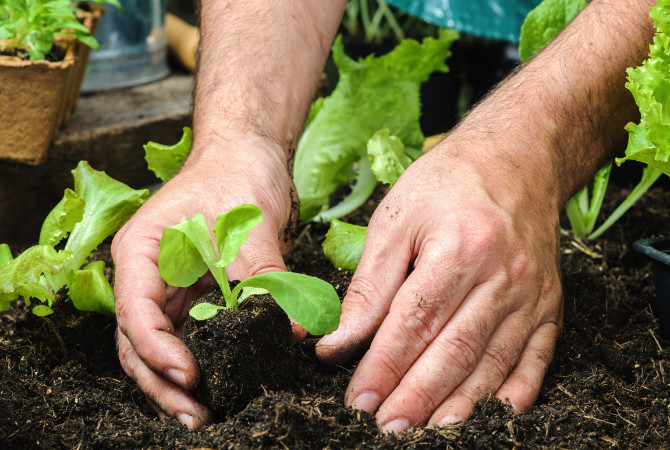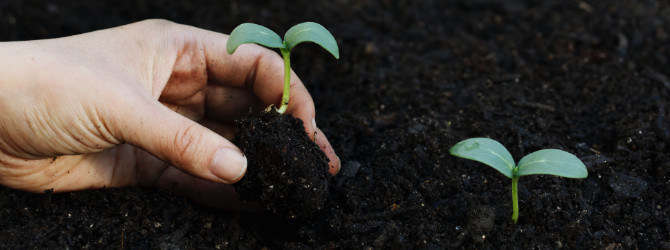Some gardeners believe that it’s almost impossible to avoid transplant shock, but I disagree. With proper care and handling, just about any plant can remain robust and healthy after transplanting.
The biggest cause of transplant shock is damage to the roots. A plant absorbs most of its moisture and nutrients from tiny little root hairs that lie far from the root ball. Once these little hairs are exposed to light, heat, and abrasion they can get easily damaged.
1. Harden off appropriately.
If you’ve bought your plants from a store that’s already hardened off its plants, then you can skip this step. But if you’re growing your own starts in a greenhouse, on a bright windowsill or under a cloche, you’ll need to make sure that your plants are fully ready to brave the outside before planting them. You can do this by setting out your plants a few hours at a time, gradually lengthening their exposure to the outside world over 5 days to a week.
Start by setting them out for four hours in the early morning or late afternoon (not the heat of the day). Gradually lengthen that out to 8 hours the next day, 12 hours the next day, etc. Once you’ve been able to keep them outside overnight for a couple of days, your plants are ready to be set into the ground.
2. Water the soil of the transplant (not the leaves) at least 30-60 minutes before transplanting.
This allows the plant to be fully nourished before being moved. Plants tend to close up their stoma when transplanted (i.e. they can no longer take in water through their leaves), and so having a full tank before being settled into their new home is a good thing. Also, moist soil allows for less friction against the roots, causing less damage and allowing the plant to recover more quickly if the root ball gets disturbed.
3. Avoid transplanting in direct sunlight.
The best days to transplant are cool, overcast days. Roots were made to thrive in the nether regions of the world—they’re quickly damaged by light and heat. If you have to plant when it’s sunny, put your body between the plant and the sun so that your shadow covers both the seedling and the hole it’s being planted in. Do not leave roots out exposed to the sun.
4. Disturb roots as little as possible (unless root bound).
The biggest cause of transplant shock is damage to the roots. A plant absorbs most of its moisture and nutrients from tiny little root hairs that lie far from the root ball. Once these little hairs are exposed to light, heat, and abrasion they can get easily damaged.
As mentioned before, roots really don’t like being disturbed from their dark wonderlands. When repotting or moving plants into the ground, take extra care not to jostle, hit, shake or otherwise remove the dirt surrounding the roots. (The exception is if your plant is root bound. If this is the case you’ll need to gently unwind the roots before planting.)
Also, make sure that the hole you’re placing your start in is big enough. Trying to jam a plant into a small hole will cause abrasion to the roots.
5. Apply a transplant fertilizer into the hole where you’re planting.
There are a number of great transplant fertilisers on the market. They’re made with just the right mixture of nutrients to allow a transplanted plant to settle in well to its new home.
6. Water well after transplanting.
After you have your plant settled in, it’s important to make sure it’s well-watered. In fact, it turns out that insufficient water after transplanting is one of the greatest causes of transplant shock. Remember, unless you’re super careful not to handle or expose any roots, most plants will not be able to take in water through their leaves for the next few days. This makes a well-watered soil even more important. Also, even though it’s super tempting to settle a plant into place by pushing down on the dirt around it, this can cause abrasion to the roots. A better way to settle the dirt around the roots is to water well—the water will effortlessly help the loose dirt fill in all the crevices.

With a little care and forethought, avoiding and/or minimalising transplant shock will be a cinch.
Did you find this article helpful? Have any other methods of minimalizing shock? Let us know!
